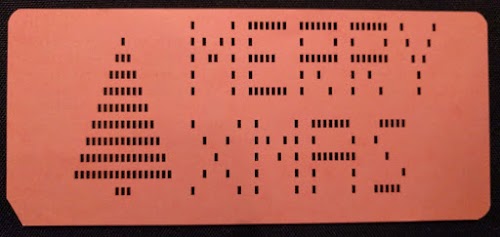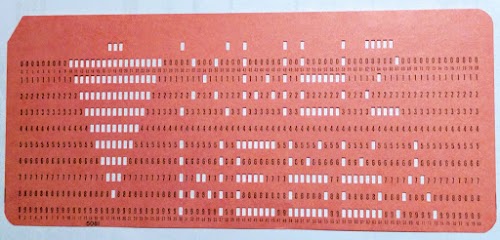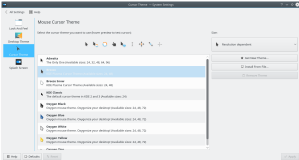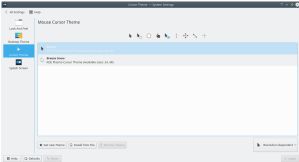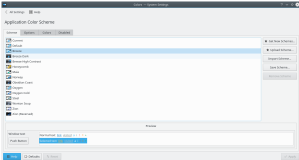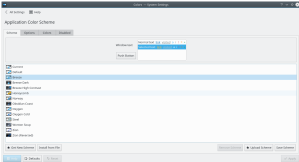Netflix fa questo, Netflix fa quello. Netflix è respinto dal Festival di Cannes (e dagli esercenti francesi). Netflix è vincitore alla Mostra del Cinema di Venezia (e gli esercenti italiani mugugnano). “Ci vuole un Netflix italiano,” sostiene un vicepremier. Le finestre distributive del cinema italiano vanno irrigidite per salvarlo da Netflix, esterna un altro ministro. Manifesti listati a lutto sostengono “Basta Netflix!” nelle maggiori città italiane, ma l’hashtag #bastanetflix svela che si trattava dell’ennesima mossa di marketing. Netflix distribuisce Sulla mia pelle e fa discutere, sensibilizza, contribuisce al dibattito pubblico. Netflix investe. Netflix produce tantissimo. Netflix fa campagna acquisti tra attori e showrunner di primo piano. Netflix traballa in borsa. Netflix si accorda con Sky (prima nel Regno Unito, l’Italia arriverà dopo). Netflix, o dell’addio alla nostra vita sociale. Ma anche Netflix and chill, indizio di una qualche rinnovata socialità.
Netflix agisce, il mondo (la bolla?) reagisce. E non basta. La presenza di Netflix sulla bocca di tutti fa il paio con la vorticosa sequenza di nuove uscite imperdibili che accompagna ogni weekend: titoli inediti, seconde stagioni, contenuti originali, quintali di library finalmente disponibile. See what’s next, annuncia un claim dell’azienda. Non c’è dubbio, per le piattaforme on demand e per l’intero settore dell’audiovisivo sono tempi interessanti. Ma l’abbondanza, la frequenza di questa continua notiziabilità, dell’innovazione perenne, della rivoluzione permanente e ormai abituale rischia di creare una cortina fumogena.
È passato qualche anno—Netflix è arrivata ufficialmente in Italia nell’ottobre 2015—ma qualcosa, forse, continua a sfuggirci. Dietro la curiosità, gli entusiasmi e qualche delusione, sotto le corazze, c’è un servizio che ha cambiato profondamente il modo in cui guardiamo i film e le serie tv, una piattaforma che ancora prima di arrivare era già imitata e temuta da tutti i competitor. Ma c’è anche un’azienda costretta di continuo a rinnovare modalità e obiettivi, alla ricerca di un equilibrio temporaneo e piuttosto instabile tra spinte opposte e difficili da tenere assieme.
Il primo bilanciamento difficile è quello tra la scintillante efficacia della promozione e la realtà vera e propria. Tra l’hype e il catalogo. Si tratta di un peccato originale: già prima del suo approdo italiano Netflix era talmente attesa che le aspettative superavano di molto l’effettiva disponibilità di contenuti, come se di colpo si potesse accedere in modo semplice e legale a tutta la tv americana o a un deposito di titoli infinito. Poi ci siamo abbonati, abbiamo cominciato a usare il servizio, il sogno è sceso sulla terra: l’offerta conteneva molto ma non tutto, il suo spazio occupato nelle nostre abitudini quotidiane è complementare agli altri mezzi.
Resta però il fatto, anche oggi, che per la prima volta in modo così convinto contenuto e contenitore risultano inscindibili. Non basta rendere disponibili programmi sempre nuovi, ma se ne deve parlare, e tanto. Il valore sta nella serie originale, certo, ma pure (soprattutto?) nel suo essere marchiata Netflix, nel trovarsi in cima tra le proposte dell’interfaccia, nell’impacchettare tutto al meglio dentro e fuori dalla piattaforma, nel creare eventi.
Un esempio minuscolo, laterale, spiega il paradosso: persino quando ha inserito nel catalogo italiano Don Matteo o Fantaghirò Netflix ha fatto notizia, bilanciato sarcasmi e nostalgie, occultando agevolmente con la potenza del brand il fatto che un servizio a pagamento rendeva disponibili contenuti che altrove, su piattaforme meno brillanti come quelle di Rai e Mediaset, si potevano tranquillamente vedere gratis. Certo ci sono la user experience, l’interfaccia formidabile, le raccomandazioni, la compiutezza del catalogo. Ma soprattutto c’è la garanzia del marchio: il meglio, il nuovo, l’imperdibile stanno lì.
Lo slancio comunicativo prevale, e titoli in realtà del tutto assimilabili alla proposta generalista (come La casa di carta o Elite, ammettiamolo, che su Canale 5 non guarderemmo o vedremmo di nascosto) diventano le nuove serie da non perdere. Resta da capire, se tutto è sempre imperdibile, quanto a lungo la strategia possa funzionare.
Un altro equilibrio parecchio difficile da mantenere è quello entro un’offerta di contenuti all’insegna dell’abbondanza, addirittura dello spreco. Su Netflix c’è tanto di tutto, a soddisfare almeno un po’ qualunque richiesta. Vale per gli originali, che a manciate popolano la piattaforma all’avvicinarsi di ogni fine settimana, tra serie, film, documentari, spettacoli di stand-up comedy, show di vario genere. E vale per il catalogo delle acquisizioni, dove ogni mese entrano decine, centinaia di item (anche per rimpiazzare quelli dai diritti in scadenza, che invece silenziosamente escono da una porta laterale).
Ma c’è un altro lato anche di questa innegabile medaglia. Lo spettatore rischia di trovarsi privo di tempo e soprattutto privo di guide, di strumenti di orientamento, di quella sincronizzazione sociale tipica della tv classica dove si è sicuri di vedere la stessa cosa insieme a tanti altri, di essere parte di una comunità, di poterne parlare. Certo, ci sono i contenuti in evidenza, le segnalazioni, il passaparola, gli accordi presi per evitare gli spoiler. Ma c’è anche un possibile blocco: c’è troppo, ed è come se non ci fosse niente.
La promozione, la produzione. Facciamo ancora un passo oltre, ed ecco che ci troviamo nel mezzo di una terza contrapposizione. A chi si rivolge Netflix, oggi? All’inizio era facile: prima agli early adopter, poi a una fascia selezionata e composita di popolazione, che tiene assieme i più giovani e gli spettatori che già pagavano un costoso abbonamento tv, il pubblico delle serie americane, chi va al cinema. Ma i piani dell’azienda di Los Gatos non si fermano lì, non possono farlo. Servono più abbonati, e il target allora si allarga a un bacino potenzialmente ben più ampio, la massa generalista. Ecco spiegata una certa insopprimibile bipolarità dell’offerta di Netflix, nelle produzioni originali come nelle acquisizioni. Cult e popolare, autorialità e pancia, Maniac e Camera Cafè.
Più il tempo passa, più emergono come minimo due Netflix: quella che va in diretta competizione con le reti tv pay, che blandisce il pubblico adolescente e giovane, che si fregia di aggettivi come quality e prestige, da un lato; e quella che invece cerca, con più difficoltà, di conquistare tutti, che propone titoli di grana più grossa, che è impegnata in una competizione con la televisione generalista, con il cinema blockbuster, dall’altro. Ma sono due teste che faticano a stare insieme sullo stesso corpo. È improbabile, rarissimo, convincere nello stesso tempo sia noi sia i nostri genitori. Proporre insieme, negli stessi giorni, il film di Alfonso Cuaron e il nuovo cinepanettone. Ma è anche, per Netflix, un passaggio obbligatorio, se deve rendere in prospettiva il suo modello sostenibile ed efficace.
Grattando sotto la superficie emergono insomma tante spinte contrastanti, difficili da tenere insieme. Ancora una: l’equilibrio complesso tra un’esigenza (e la comunicazione) che puntano sempre al meglio, al nuovo, all’originale e un modello produttivo disruptive basato sulla sistematica eliminazione di ogni vincolo e tradizione—dalla durata fissa degli episodi alle pause pubblicitarie e ai ritmi di uscita settimanale—e sull’elaborazione di ampie quantità di informazioni per produzioni almeno in parte data-driven.
All’inizio dell’avventura, ai tempi di House of Cards e Orange is the New Black, da qui è arrivata l’aria fresca. Ma ora il modello sembra inceppato, ed emerge la contraddizione tra una qualità cercata con troppa forza e condizioni strutturali che la rendono difficile: limiti, restrizioni e confini servono a cementare la creatività, a darle sostanza; l’abbondanza impedisce di seguire i progetti con la cura dovuta; l’algoritmo spiega il passato più che immaginare il futuro; nel successo c’è sempre molto di casuale. Ci sono ampie eccezioni, ma molte produzioni di Netflix si sono irreggimentate, a comporre una programmazione media, senza picchi e vette, senza sprofondi. E dal medio al mediocre il passo è piuttosto breve, se le innovazioni stanno altrove (nella cable, sui network) e l’on demand insegue solo a stretto giro. Tutto sembra prevedibile (perché in effetti si voleva prevedere, ed è stato previsto).
Dietro all’hype e agli entusiasmi, su tanti fronti Netflix rivela un’inedita complessità. Dopo la marcia trionfale dei primi anni, serve ora un cambio di passo per consolidarsi e diventare grandi davvero. La scommessa dell’azienda, nel mondo e in Italia, è che l’equilibrio tra le spinte contrapposte esista. Che il tanto, il troppo, il tutto consentano pure di arrivare a una quadratura del cerchio. Ma è una scommessa incerta, rischiosa, per cui servono tempo, soldi, energie, per cui è necessaria oltre alla forma anche tanta sostanza. E intorno tutto sta cambiando ancora una volta, proprio grazie a Netflix, con le mosse sul mercato video di Amazon, Disney, Google/YouTube, Facebook. Sotto agli stunt promozionali e alla bulimia produttiva, la traiettoria di Netflix pare abbastanza chiara: o la va o la spacca. See what’s next.
Segui Luca su Twitter.
Vuoi restare sempre aggiornato sulle cose più belle pubblicate da VICE e gli altri canali? Iscriviti alla nostra newsletter settimanale.













